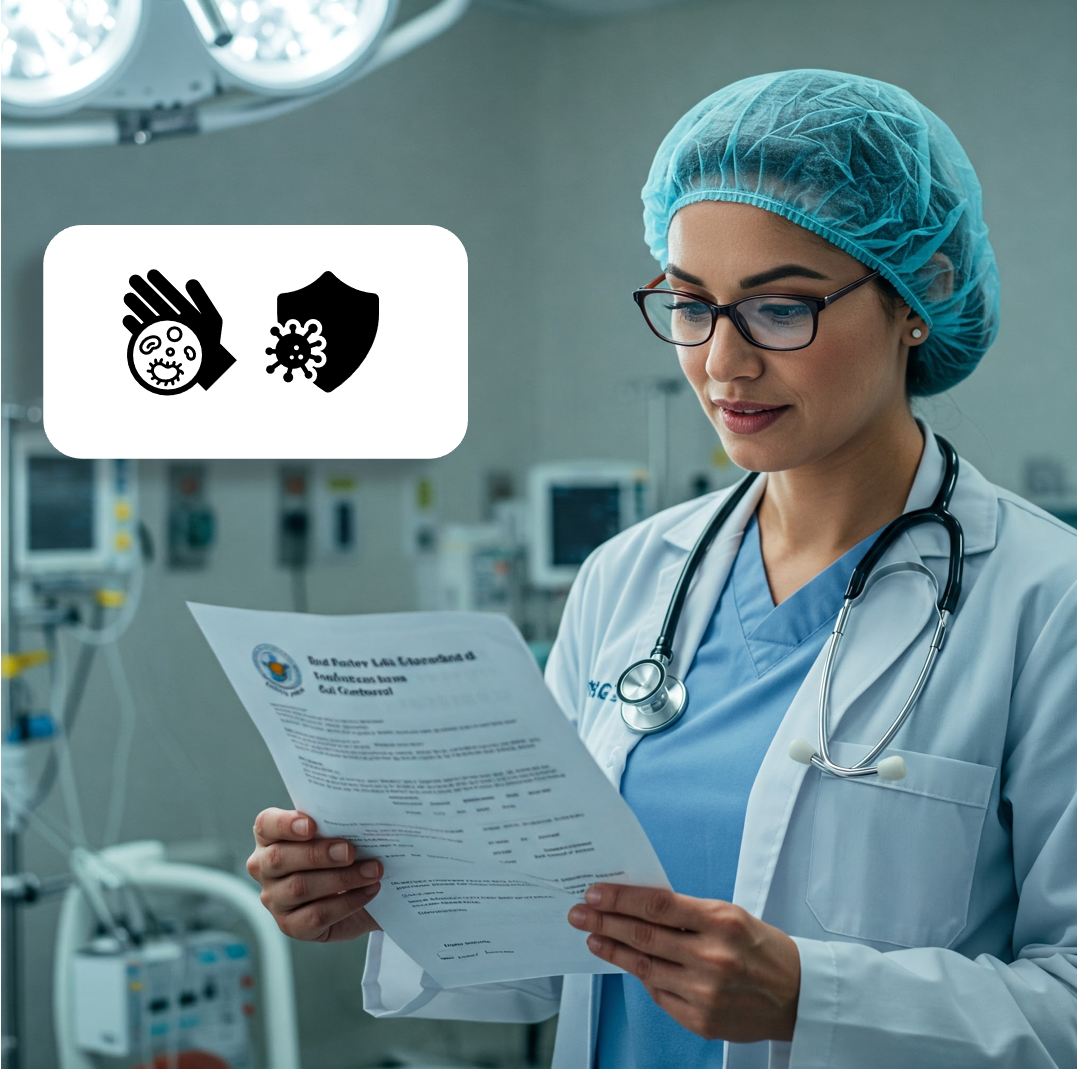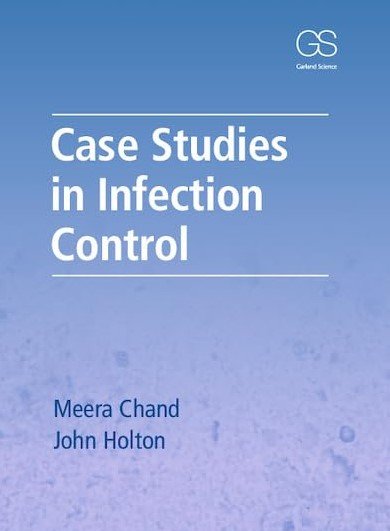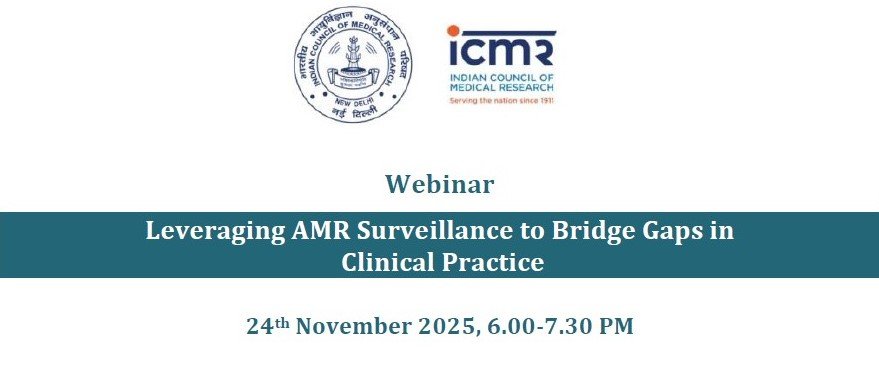This post is for academic purposes only. Please read the original standards if you intend to use them for clinical purposes.
This document summarizes the key themes and important ideas from Joint Commission International (JCI) 8th edition accreditation standards for hospitals, specifically focusing on the chapter dedicated to Prevention and Control of Infections (PCI). It highlights the critical importance of a systematic, hospital-wide infection prevention and control program to minimize the risk of healthcare-associated infections (HAIs) for patients, staff, and visitors. The standards emphasize a proactive, data-driven, and risk-based approach, requiring leadership support, qualified personnel, comprehensive policies and procedures, ongoing education, and integration with the hospital’s overall quality and patient safety program.
Main Themes and Important Ideas:
The Significance of Infection Prevention and Control (IPC):
- HAIs are a significant global health concern, with substantial morbidity and mortality rates.
- Effective infection prevention and control is crucial in hospitals, even as multidrug-resistant infections (MDROs) become more prevalent in various settings.
- A systematic program is necessary to reduce the possibility of acquiring and transmitting infections.
Principles of an Effective IPC Program:
- Systematic Approach: Hospitals need to establish a comprehensive program tailored to their specific risks, patient population and services.
- Practicality and Reasonableness: Adopted measures should be feasible to follow.
- Planning, Implementation, and Evaluation: The program should encompass these key stages.
- Leadership Support and Collaboration: Strong plans require the input and support of hospital leaders and emphasize communication and collaboration among all personnel.
- Coordination: The program should be coordinated across all departments and services within the hospital and with external public health organizations.
- Preparedness: Develop a hospital-wide prospective preparedness plan for infectious disease outbreaks.
Key Elements:
1. Responsibilities and Oversight:
- A qualified individual(s) must guide the implementation and oversee the program throughout the hospital. This requires expertise in disease transmission, isolation measures, and high-risk processes.
- The program must be coordinated across all departments and services, including a formal interdisciplinary coordination mechanism.
- Hospital leaders must provide adequate resources to support the program, including sufficient staffing and information management systems for data collection and analysis.
2. Goals of the IPC Program:
- Utilize a risk-based, data-driven method to establish priorities, implement interventions, and monitor effectiveness against HAIs and MDROs.
- Conduct an annual Infection prevention and Control Risk Assessment (ICRA) to identify and prioritize risks, considering trends, potential sources, non-aligned practices, and infrastructure changes. This assessment should cover pathogens, employee health, emergency preparedness, administrative aspects, environmental factors, and supplies/equipment.
- Implement evidence-based interventions, including care bundles for common HAIs (CLABSI, VAP, CAUTI, SSI).
- Proactively track and monitor infection risks, rates, and trends, including MDROs, and benchmark against other hospitals.
- Maintain awareness of community data on infectious diseases from organizations like WHO and CDC.
- The laboratory must implement processes to reduce infection risks from exposure to infectious diseases and biohazardous materials and waste, including biosafety rules and reporting of lab-acquired infections.
3. Medical Equipment, Devices, and Supplies:
- Reduce infection risks associated with these items through proper cleaning, disinfection, sterilization, and storage, adhering to manufacturer’s instructions, Spaulding classification, and evidence-based guidelines.
- Implement specific practices for low-, intermediate-, and high-level disinfection and sterilization, including documentation, conflict resolution between manufacturer instructions, and tracking of high-level disinfected and sterilized instruments.
- Staff involved in reprocessing must receive initial and ongoing training and demonstrate competency.
- Establish a process for managing the reuse of single-use devices (SUD) in compliance with regulations, including identifying reusable devices, ensuring proper reprocessing, tracking reuse to patients, and monitoring adverse events.
- Implement a process for managing expired and damaged devices and supplies, including proper storage to prevent contamination and damage.
4. Environmental Cleanliness:
- The infection prevention and control program provides oversight for the cleaning and disinfection of the environment, including routine cleaning, terminal cleaning, and addressing high-risk areas.
- Follow evidence-based guidelines for cleaning and disinfection throughout the hospital, including patient care areas, public spaces, and staff workspaces.
- Monitor the effectiveness of environmental cleaning and disinfection processes and use data for improvement.
- Adhere to evidence-based guidelines for the cleaning and disinfection of laundry, linens, and scrub attire provided by the hospital, ensuring proper handling, processing, and storage to prevent cross-contamination.
5. Infectious Human Tissues and Waste:
- Implement processes for the proper disposal of waste, including infectious waste, blood, and pathological waste, to prevent environmental contamination and infection transmission.
- Establish practices for the safe handling and disposal of sharps and needles using puncture-proof containers and ensuring proper final disposal.
- Ensure the proper management of human tissues, including respectful and safe handling in mortuaries, adherence to regulations and cultural customs, and maintaining chain of custody.
- Reduce the risk of infections associated with exposure to blood, body fluids, and other potentially infectious materials by identifying at-risk processes, implementing preventive practices (including PPE), and having an expeditious process for reporting and managing exposures.
6. Food Services:
- Reduce the risk of infections associated with food and dietetics services by ensuring safe storage, preparation, and transportation of food to prevent pathogen transmission and microbial growth.
- Implement measures for careful selection of food sources, preventing cross-contamination, maintaining proper food temperatures, ensuring personnel hygiene, and managing food stored outside central kitchen areas.
7. Transmission of Infections:
- Protect patients, visitors, and staff from the transmission of infections and communicable diseases by implementing standard and transmission-based precautions (contact, droplet, airborne, reverse/protective isolation).
- Establish policies and procedures for isolation and barrier precautions based on the mode of transmission.
- Routinely monitor and make available negative pressure rooms for airborne infections and have a process for managing patients when these are unavailable, including temporary negative pressure solutions.
- Provide readily available resources and equipment (hand hygiene supplies, PPE, disinfecting agents) to protect individuals from biological, physical, and chemical hazards and ensure proper training in their use.
- Implement processes to support preparedness for epidemiologically significant infectious diseases or special pathogens (e.g. COVID-19), including screening protocols, isolation procedures, communication with public health, PPE guidelines, waste management, staff education, and vaccination plans.
8. Quality Improvement and Program Education:
- Integrate the infection prevention and control process with the hospital’s overall quality and patient safety program, using epidemiologically important data and measures.
- Collect and analyze data on infection prevention and control activities, use monitoring data for program evaluation and improvement, and participate in internal and external benchmarking.
- Provide education on infection prevention and control practices to all staff (initial and ongoing), health care practitioners, patients, families, and others as indicated by their role, including emerging trends and changes in policies.
Conclusion:
The PCI standards of JCI provide a comprehensive framework for hospitals to establish and maintain effective infection prevention and control programs. Adherence to these standards is crucial for minimizing the risk of HAIs, ensuring patient safety, protecting staff, and contributing to public health efforts. The emphasis on leadership support, a data-driven approach, ongoing education, and integration with quality improvement initiatives underscores the multifaceted nature of successful IPC in modern healthcare.
Citation: Joint Commission International Accreditation Standards for Hospitals including Standards for Academic Medical Center Hospitals. 2024









Same standards are being followed up since many years, they are essential actually for safe and healthy hospital environment.